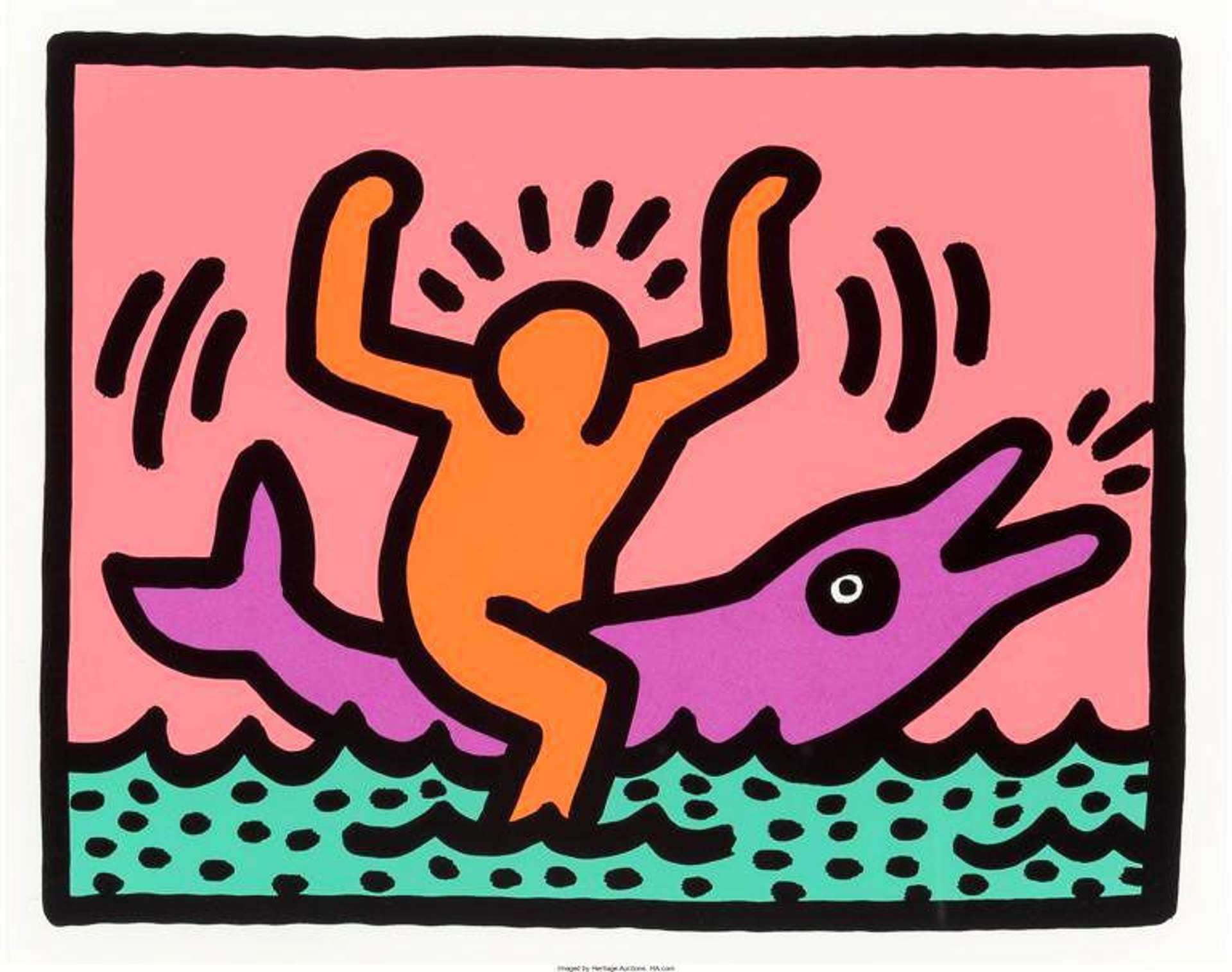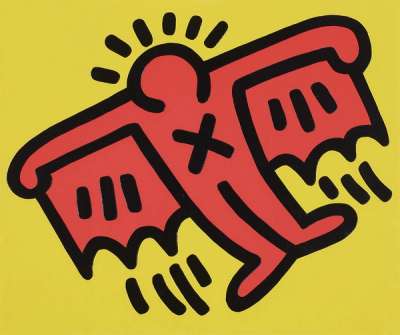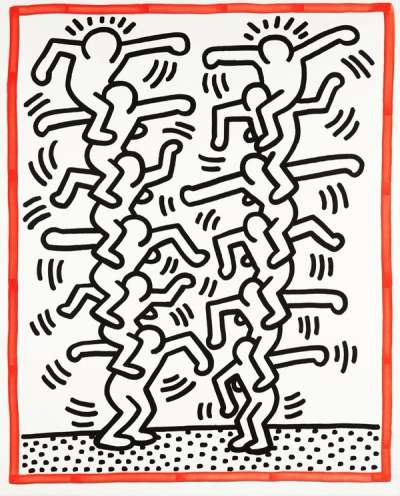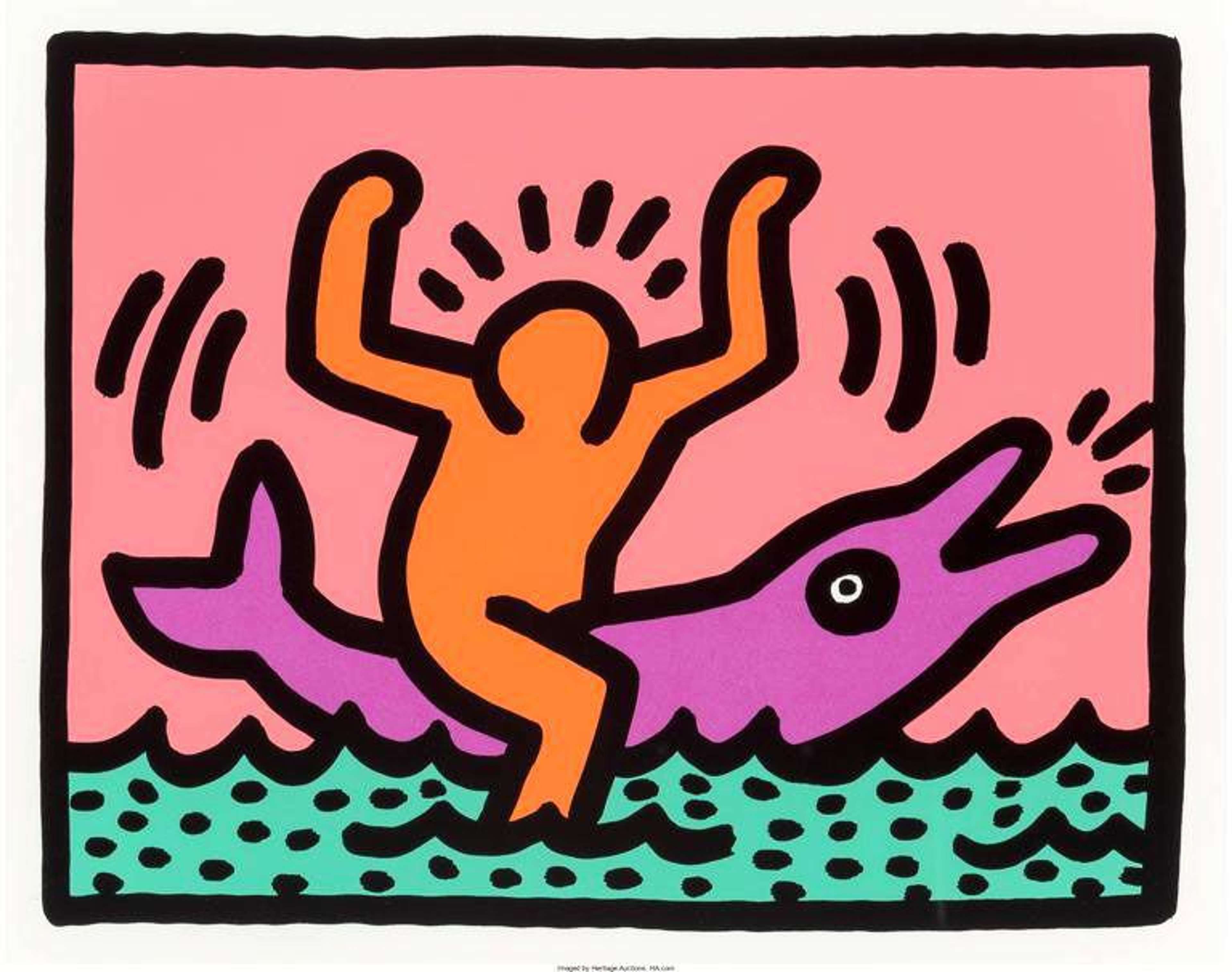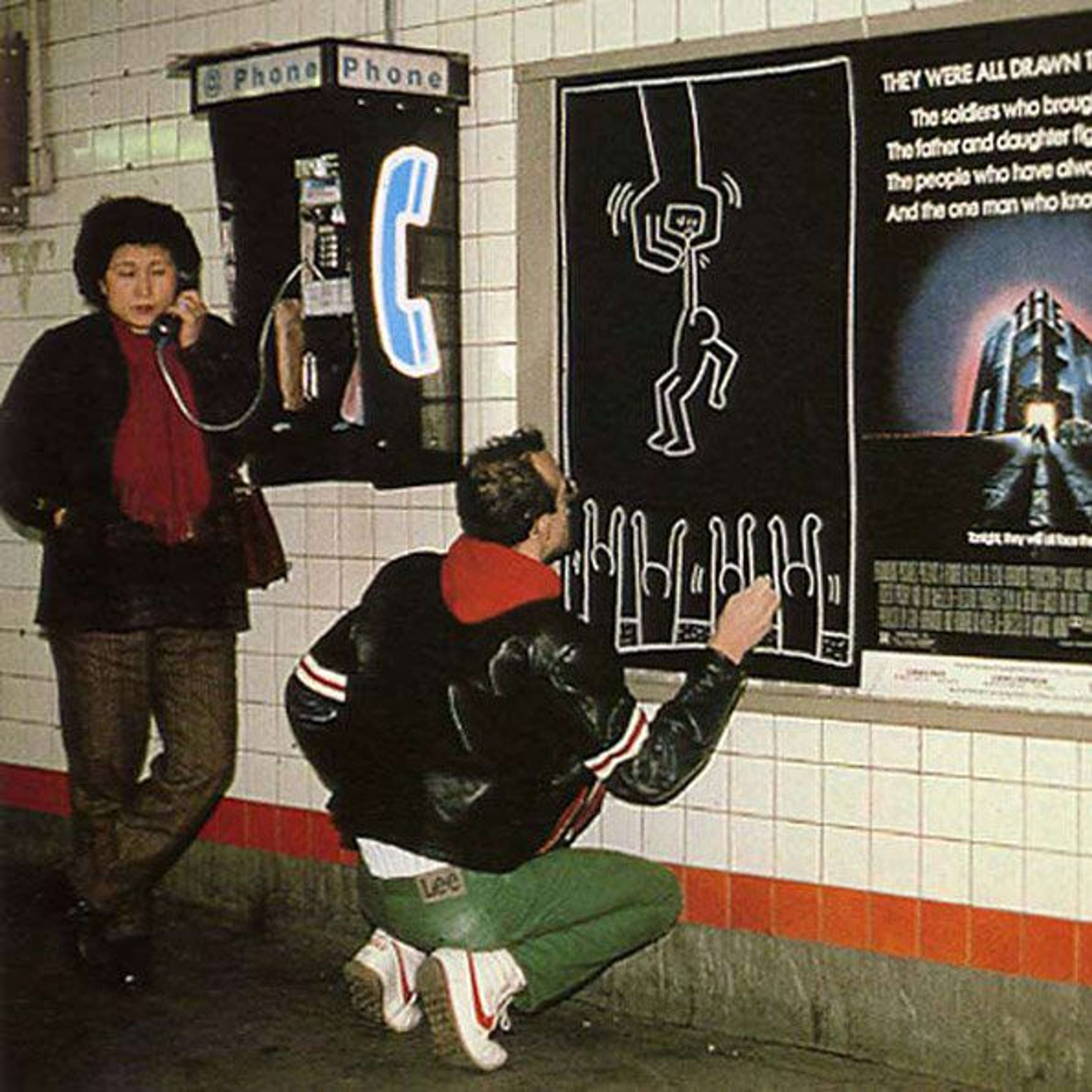 Three Lithographs 3 © Keith Haring 1985
Three Lithographs 3 © Keith Haring 1985
Keith Haring
250 works
Did you know that Keith Haring painted on the Berlin Wall? American Pop Art sensation and staunch activist, Haring was an ideal choice when it came to painting the wall, using his art to send unifying messages to the public.
Commissioned by the Director of the Checkpoint Charlie Museum, Haring was invited to paint the visible border crossing officially named Checkpoint C. Typical of his other murals, posters and graffiti, Keith Haring’s Berlin Wall mural is testament to the power of his art to bring about change in the world.
 Image © WikiArt / Berlin Wall Mural © Keith Haring 1986
Image © WikiArt / Berlin Wall Mural © Keith Haring 1986When did Keith Haring paint on the Berlin Wall?
Keith Haring painted on the Berlin Wall in October of 1986. Haring described his mural on the 300-metre long stretch as ‘an attempt to psychologically destroy the wall by painting it’. Even though it was illegal to paint on the wall marking the border between West and East Germany, Haring painted his mural to highlight the traumas caused by this symbol of the Cold War.
The Berlin Wall, dividing the Federal Republic of Germany from the Soviet-allied German Democratic Republic, stood from 1961 until 1989. For nearly 30 years it was a site of violence, hopelessness and disunity. As East Berliners made the treacherous attempt to escape into West Berlin, many were shot and killed by border guards at crossings like Checkpoint Charlie. With his mural, Haring therefore left a mark to stress the senseless division of mankind. It was a mark that was quickly covered with other artists’ graffiti, but Haring hoped that the mural would be impermanent and cease to exist with the demolition of the wall. Haring wrote in his diary in 1987 that ‘It is temporary and its permanence is unimportant. Its existence is already established’.
Why did Haring paint on the Berlin Wall?
In an interview with People, Haring told viewers that his Berlin Wall mural was ‘about the ridiculousness of all walls and enemies and borders’. In fact, Haring often used his art to make big social and political statements like this. His Free South Africa series tackled the oppressive nature of Apartheid in South Africa, and he pasted these posters around New York in 1986 - the same year as the Berlin Wall mural - to mobilise support against it.
Also a relentless activist for HIV/AIDS awareness, Haring frequently used his art to destigmatise the disease and rally funds to find its cure. It is no surprise that the deep-set division symbolised by the Berlin Wall aroused Haring’s revolutionary character, and he painted it to appeal to humanity above all differences.
What did Haring paint on the Berlin Wall?
Across the great stretch of the Berlin Wall visible at Checkpoint Charlie, Haring painted a chain of interlinking figures, their limbs continuously merging into one another without partitions. Typical of Haring’s oeuvre, the figures are painted in Haring’s signature line and are instantly readable and relatable to their viewers, regardless of their geographic location. Painted in the colours of the German flag - red, yellow and black - these figures symbolise a commonality between people living on both sides of the border.
At the end of this perpetual chain, a figure is rooted to the ground and seems to be holding up the others across the wall. Despite being horizontal, Haring’s mural therefore gives the impression that these figures are helping one another to climb over the wall or push it over. Haring shows that by working together, East and West Berliners could destroy the wall that physically and symbolically divided them.
What side of the Berlin Wall did Haring paint?
Located a few metres inside the East German side of the border, Haring’s mural was technically painted on the Soviet-controlled side of the wall. Amidst the threatening scenes of barbed wire and armed border guards, Haring painted his Berlin Wall mural as a ‘humanistic gesture’ for the people of Berlin. To Haring, it didn’t matter which side of the wall or border he painted on: ‘It’s about both sides coming together’. The alternating red and black figures have a circle painted in the centre of their bodies, which is painted the opposing colour to the outline of their figure. If the red and black figures signify the distinction between East and West Germans, these painted circles represent their unity as Germans and, crucially, as humans.
 Image © Hobo Matt / Crack is Wack mural © Keith Haring 1986
Image © Hobo Matt / Crack is Wack mural © Keith Haring 1986Is Keith Haring a muralist? What other murals did Haring paint?
Throughout his artistic career, Haring painted 45 known murals. Haring was always a champion of democratising art, attesting that ‘the public has a right to art’. Through his murals, Haring took art out of the bourgeois and exclusive realm of the art gallery and brought it directly to the people. Haring’s art gradually became part of the everyday fabric of the urban landscapes he painted.
In 1980, Haring began to master his signature line-drawn style on the subways of New York City. From this point onwards, Haring’s murals proliferated across the city. In 1986, he painted a mural inside Woodhull Hospital as a ‘positive, uplifting, unaggressive, imaginative, and comforting’ homage to the hospital’s dedication to AIDS research and treatment. Also in 1986, Haring painted his Crack is Wack mural in the handball courts of East Harlem as a warning of the struggles and addiction caused by the drug.
1986 was a very busy year of mural painting for Keith Haring. Just two years before his diagnosis with AIDS, and four years before his untimely death, Haring increasingly dedicated his art to public murals which — like life itself — were often fleeting. Despite their impermanence however, murals like that on the Berlin Wall left poignant messages of hope for the future — something Haring’s art and life are testament to.
Browse our Keith Haring prints for sale or get a valuation here.




